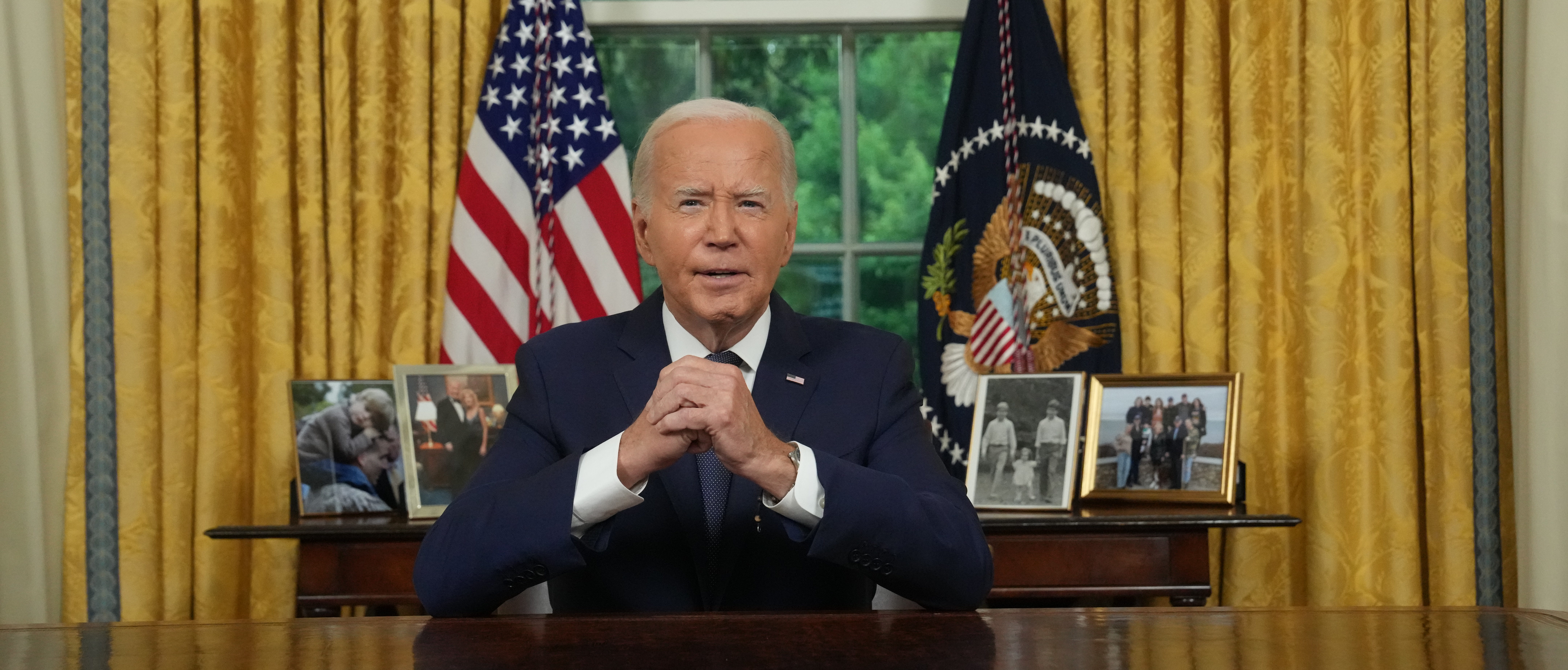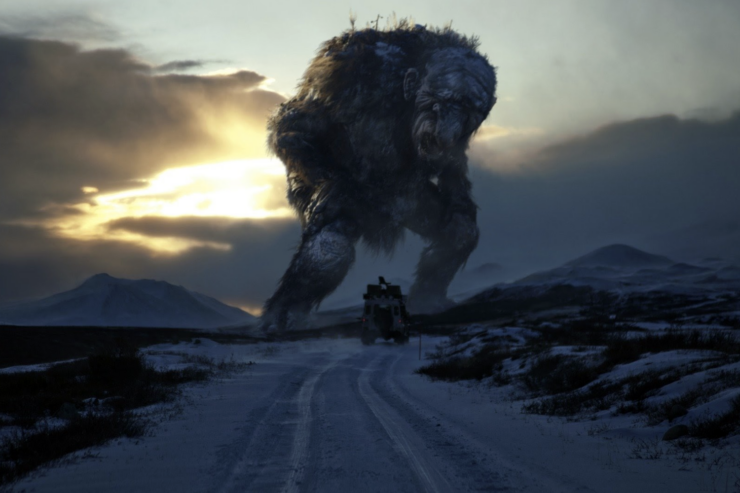
reactormag.com
Trollhunter: Strategies for Wildlife Management of Charismatic Megafauna
Column
Science Fiction Film Club
Trollhunter: Strategies for Wildlife Management of Charismatic Megafauna
Combining found footage and gorgeous scenery with the dry humor of your favorite mockumentary, “Trollhunter” offers a fresh, thoughtful approach to movie monsters.
By Kali Wallace
|
Published on July 17, 2024
Credit: Filmkameratene A/S / Film Fund FUZZ
Comment
0
Share New
Share
Credit: Filmkameratene A/S / Film Fund FUZZ
Trollhunter (Norwegian: Trolljegeren) (2010) Directed by André Øvredal. Screenplay by André Øvredal. Starring Glenn Erland Tosterud, Johanna Mørck, Tomas Alf Larsen, Hans Morten Hansen, and Otto Jespersen.
As I am writing this, it is 100ºF/38ºC in the Pacific Northwest, and I hate it. I watched this entire movie yearning for the misty fjords and snow-covered mountains of western Norway. More than once while watching I muttered to myself, “I wish that were me.” Maybe I meant the characters. More likely I meant the trolls. I have always felt a strong kinship to the Discworld-style of troll, anyway—the ones whose intellectual capacity decreases as the temperature rises.
When planning each month for this column, I try to include films from different times and places, as well as some variety within the theme. That’s not always straightforward. There are, indeed, one million bajillion giant monster movies in the world, a very large percentage of them are variations on the themes of King Kong (1933)and Godzilla (1954). So I looked around for movies that don’t involve a giant monster showing up to crush a major metropolitan area. I briefly considered Tremors (1990), but I nixed it because I already had two American movies on the list. (Don’t worry, Tremors is still on the main list for a future watch.) That’s what brought me to Trollhunter.
I know it’s trendy to hate on found footage as a filmmaking technique, but I have a bit of a fondness for it, even though I am well aware that most found footage movies are kinda crap. My fondness isn’t very deep: I just enjoy stories that use the restrictions of medium and perspective to talk about weird, spooky, and inexplicable things. These are the same reasons I like books about fictional movies and podcasts about fictional supernatural investigations.
These days the vast majority of found footage films are horror, but that’s not where it started. The first film to specifically identify as found footage—that is, to claim to be recordings that were provided to or discovered by whoever is now sharing them with the audience—was almost certainly The Connection (1961), experimental filmmaker Shirley Clarke’s movie about heroin addiction among jazz musicians. That movie is also notable for another reason: the role the film and Clarke played in protesting censorship in cinema.
But what made the found footage technique famous (or infamous) was the notorious Cannibal Holocaust (1980), an Italian cannibal exploitation film. (I had heard of Cannibal Holocaust before, of course, but before writing this article I had not really digested the fact that cannibal exploitation films are an entire genre. Life is truly a journey on which we never stop learning.) (I already regret using the word “digested,” here, but I’m not going to change it.) Cannibal Holocaust was promoted to appear as realistic as possible, but it was still a bit of a surprise when speculation started by a French magazine led to director Ruggero Deodato being arrested in Italy on suspicion of murder. The charges were dropped after he proved the actors were still, in fact, alive, but that is the sort of thing bound to give a film and its techniques lasting infamy. (That, and all of the very real animal cruelty that took place while making it.) (I’m going to stop talking about Cannibal Holocaust now.)
Several more found footage-style movies came along over the next few years. They showcase a variety of genres, from media satire (Special Bulletin, 1983) to serious war drama (84C MoPic, 1989) to violent black comedy (America’s Deadliest Home Video, 1991, and Man Bites Dog, 1993), but the only sci fi to speak of was generally UFO-themed, and there wasn’t a lot of horror.
Then came The Blair Witch Project (1999), which arrived with an extremely effective viral marketing campaign and a whole lot of audience buzz. It blew up into a massive, surprise hit, the kind of dark horse success that most small, indie movies scarcely even dream about. Filmmakers with a lot spooky ideas but not a lot of money have been busily making found footage movies ever since.
Trollhunter begins with a found footage classic: a title card explaining that what we are about to see was mysteriously delivered to the production company by an unknown sender, followed by disclaimers that nothing was altered and everything appears to be authentic.
Then we open on three university students: aspiring documentarian Thomas (Glenn Erland Tosterud), sound tech Johanna (Johanna Mørck), and the rarely-seen-but-always present cameraman Kalle (Tomas Alf Larsen). They’re driving around the countryside near the western Norwegian town of Volda (real world population: 10,960), trying to make a documentary about a poacher who has been killing bears—which is, let’s be honest, exactly the sort of thing film students would do in a town where a poacher killing bears is the hot news topic.
They interview some legal bear hunters and are brusquely dismissed by Finn Haugen (Hans Morten Hansen), a bureaucrat from the Norway Wildlife Board, before finally getting a tip about how to find the poacher, whose name is Hans (played by Otto Jespersen). They pester him for an interview, which he repeatedly refuses, so they settle for following him around for a while. (Some necessary meta-context: Hansen, Jespersen, and a few others in the film are well-known Norwegian comedians, a signal that we are not intended to take any of this very seriously.)
We get to look at some stunning Norwegian scenery (and pause the movie to research plane tickets to Norway, conclude they are too expensive, and cry a little) before the film students follow Hans into the deep, dark woods one night. Which is, yes, a terribly stupid thing to do if you’re following a suspected bear poacher around, but I’ll let you make your own jokes about them risking an encounter with both a man and a bear in the forest. They hear distant roars, see some flashing lights, then Hans comes racing out of the woods bellowing about a troll.
Thomas is injured by a very large creature as they run away. All four of them make an escape in Hans’s vehicle, and the students nervously ask him if he was, you know, totally kidding. About the troll. Hans assures them he was not. They don’t quite believe him, but they still ask if they can film when he comes back to hunt the troll.
The next night, Hans instructs the three filmmakers on the finer points of troll-hunting: how to disguise their scents, how to wield UV light as a weapon. He asks them repeatedly if any of them are Christian, because trolls—of course, as everyone knows—can smell Christian blood. Then they all set off into the woods. The movie makes good use of its environment—those woods are dark—and there are some nicely spooky moments after they encounter a giant three-headed troll in the woods. The troll CGI is quite good as well; this creature and the others we see look pretty cool.
But the film really hits its stride after the troll hunt, when it makes a playful bait-and-switch from creepy-monsters-in-the-woods found footage to pure tongue-in-cheek mockumentary. Trollhunter doesn’t always balance its humor and horror perfectly, but where it really shines is in capturing the bumbling tone of an earnest, bewildered documentary on a completely absurd subject. I cheerfully admit that I think Christopher Guest’s Best in Show (2000) and Jemaine Clement and Taika Waititi’s What We Do in the Shadows (2014) are two of the funniest movies in existence, so I am precisely the target audience for this sort of humor. (Fun fact: The portmanteau mockumentary has been around since the 1960s, but it didn’t gain widespread popularity as either a category description or a film type until Rob Reiner’s This Is Spinal Tap (1984).)
Hans tells the students that he let them come along because he wants them to make their film. Because he’s Norway’s only trollhunter, and he’s tired of it. He’s tired of working long hours at night, and he’s tired of receiving too little compensation, and he’s tired of the bureaucracy. He wants the public to know the truth about trolls, he says, because his job sucks.
In general, I am willing to define “science fiction” fairly generously, because I am very much a descriptivist rather than a prescriptivist when it comes to genre, and also because it’s my column so I do what I want. But I do want to point out that I am well aware this isn’t really a sci fi film. I do know that! Don’t worry! It’s marketed as “dark fantasy” and it features magical monsters out of folklore.
But it is a fun example of a film treating a fantastical premise in a science fictional manner. I’m not sure if this approach has a name, but it’s sort of an inverse of Clarke’s Third Law. That is, if any sufficiently advanced technology is indistinguishable from magic, we could argue that any sufficiently rigorous magic is indistinguishable from science.
Trollhunter’s knowingly wry, very dry humor is built on treating its folkloric monsters with a great deal more scientific rigor than is managed in a lot of actual, self-described sci fi (including many films we’ve already watched for this column). The fact that the science in question is wildlife biology is a bonus, partly because I think there should be more speculative fiction stories about wildlife biology, but also because director André Øvredal is showing his primary influence quite proudly.
And, no, that isn’t The Blair Witch Project. It isn’t even Cloverfield (2008), that other, more famous, and much bigger budget giant monster found footage movie. In fact, because it’s a found footage film about people earnestly trying to make a proper documentary, Trollhunter gives itself an excuse to eschew a lot of the usual shaky-cam aesthetics, and chooses instead to milk low-key humor out of every scene where Johanna is wrangling her unwieldy boom mic into tight spaces. Øvredal admits the movie is found footage in part because he was working with a small budget in a country without a terribly large film industry.
Because, see, the movie Øvredal cites as his main inspiration for Trollhunter is Jurassic Park (1993).
That inspiration is obvious in many of the cinematography choices—the side-mirror view of the troll chasing the car, for example—but I think it’s also obvious in other ways. Both movies are essentially saying: “Let’s assume these giant, dangerous creatures are alive in the modern world. What do we know about how they live? How can we manage them? What happens when things go wrong?”
Trollhunter doesn’t have a fossil record to rely on, but it does have centuries of folklore and artwork that it can use. The look of the trolls are winkingly influenced strongly by the works of artists John Bauer and Theodor Kittelsen; at one point the characters make a joking reference to a lovely Kittelsen painting illustrating a Norwegian fairy tale. All of the lore Hans either confirms or debunks for the filmmakers is drawn from stories: trolls eating rocks, turning to stone, being lured by goats, scenting Christian blood.
But the way all of those elements are woven together in the movie means the characters are not dealing with magic; they are dealing with the physical reality of very large and dangerous animals. Hans is partly modeled after Robert Shaw’s character Quint in Jaws (1975), with that same level of practical, hard-won knowledge.
Trolls come in all shapes and sizes in folklore—because there are different species. Why do some of them have three heads? Those heads are ornamental, not functional, like eyespots on a butterfly or plumage on a bird of paradise. Sunlight turns them to stone, and so will UV lights. But why does sunlight turn them to stone? The veterinarian (played by Torunn Lødemel Stokkeland) helpfully explains that it’s all to do with the way their bodies process Vitamin D and produce calcium. (Øvredal’s wife is a veterinarian; he used her expertise to rationalize his trolls.) Even the most irrational of the creatures’ traits—their ability to sniff out Christian blood—comes up against the scientific method; after poor Kalle meets his untimely fate, Hans admits that he has no idea how the trolls will react to Malica (Urmila Berg-Domaas), who is Muslim.
Through all of this, we follow Hans and filmmakers through the Norwegian countryside as they try to figure out why trolls have been escaping from their designated wilderness preserves and behaving in increasingly aggressive ways. The trolls are stampeding where they shouldn’t be stampeding, fighting where they don’t normally fight, and slaughtering tourists and livestock in places that are normally troll-free.
In the end, what’s wrong with the trolls is horrifying but completely natural, because sometimes nature is better at horror than we are: the trolls have rabies. So does Thomas, because he was bitten by one and seems to be experiencing early symptoms by the end of the movie. We don’t find out if he gets treatment in time (get treatment immediately if you’re exposed to rabies!), nor do we find out what happens to Hans after he marches off into the snowy mountains after killing the enormous troll he thinks is patient zero for the outbreak. Most of all, we are left to think that while Haugen and the Wildlife Board wanted Hans to make the problem go away, they probably did not learn anything from the experience and likely won’t change anything about their troll management approach.
Anybody who has ever lived in close proximity to wildlife has seen variations on this before. Øvredal was mostly drawing on the way farmers clash with the Norwegian government when predators kill livestock, but people all over the world are familiar with the problem of attempting to restrict the movement of large animals into smaller and smaller fractions of their natural habitat, and the anger, fear, and confusion that result when those attempts inevitably fail.
Movies about giant monsters are pretty much always about trying to kill the giant monsters. With the exception of the Jurassic Park franchise and various other dinosaur films, we don’t often explore people trying make sure the massive, dangerous creatures stay alive. When we do, it’s usually achieved by characterizing them differently from ordinary animals, such as making them exceptionally smart, unusually perceptive, or particularly helpful to humans.
And that’s a little sad! It’s sad because the part of me that was rooting for the dinosaur in The Beast From 20,000 Fathoms (1953) is the same part of me that roots for reintroduced wolves and bears who wander into government buildings and orcas who attack boats, even if they are doing it just because they’re assholes. We shouldn’t have to find animals useful and nonthreatening to let them live.
I like Trollhunter mostly because it’s spooky and funny, and the scenery is very beautiful, and I appreciate the deadpan humor of mockumentaries that stretch a silly premise out to its logical extremes. But I also like it because it’s about the complexities of existing alongside big, dumb, inconvenient creatures who are dangerous but aren’t useful weapons or symbols of human hubris or anything like that. They’re just animals, and animals can be expected to behave like animals. It’s not their fault that humans keep changing the world around them beyond recognition.
Share your thoughts on Trollhunter below! Did it help you beat the heat, at least a little bit? What creatures out of myth and legend and sci fi should be given the same mockumentary treatment?
Next week: We’re getting back to fighting monstrous symbols of humanity with The Host (Korean: 괴물) (2006). Please make sure you are looking at the South Korean movie from 2006 about a large river creature and not the American alien parasite movie from 2013 or any of the other works with that regrettably common English title! Watch it on Amazon, Hulu, Roku, Hoopla, Kanopy, and many other places.
The post <i>Trollhunter</i>: Strategies for Wildlife Management of Charismatic Megafauna appeared first on Reactor.















